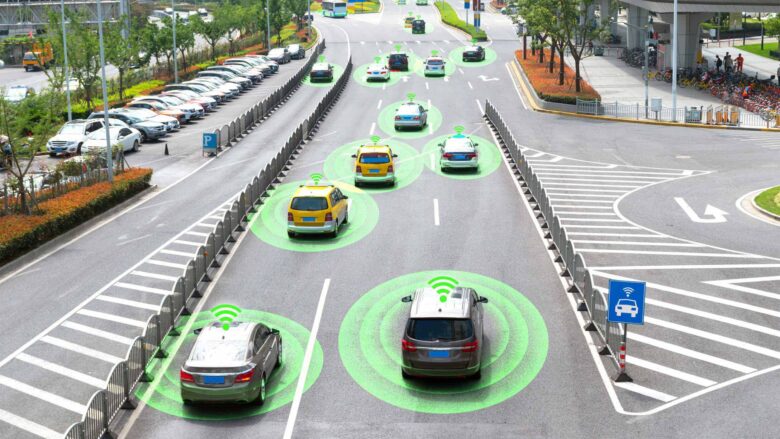As climate changes continue to pose a serious danger to our world, the transportation sector remains among the main contributors of greenhouse gas emissions around the world. Cars powered by fossil fuels produce substantial amounts of carbon dioxide, as well as other harmful substances that impact the health of the public and air quality. To combat this pollution, green technologies are emerging as a major power in transforming the way that goods and people travel between locations. Industries, governments, and entrepreneurs are coming together to cut emissions, increase the efficiency of their systems, and make transport systems more environmentally sustainable. Integrating clean technology is no longer a distant idea but an actuality that is shaping our future mobility.
Electric Vehicles as the New Standard
Electric automobiles (EVs) have been at the forefront of the eco-friendly movement in transportation. With no tailpipe emissions, EVs provide a viable alternative to diesel-powered and gasoline-powered automobiles. Technology advancements in batteries that include lithium-ion as well as solid-state batteries are making EVs cheaper, more efficient, and suitable for daily use. Automobile manufacturers of all sizes invest heavily to develop electric vehicles, and many are agreeing to phase out internal combustion engines completely within the next few decades. The growing infrastructure for charging, as well as government incentives and increasing awareness of consumers, has accelerated the adoption of electric vehicles. Clean technology has transformed a once, albeit niche, industry into a mainstream phenomenon that is rapidly becoming the norm across cities and across the globe.
Hydrogen Fuel Cells Powering the Next Generation
Hydrogen fuel cells are promising for areas where battery-electric vehicles could not be sufficient, like long-haul shipping, long-haul trucking, and aviation. The fuel cells produce electricity via the chemical reaction of oxygen and hydrogen, releasing water vapor as the only result. The technology allows rapid refueling as well as long driving distances, which makes it suitable for industrial and commercial applications. Many countries and businesses have invested in the creation of hydrogen infrastructures, such as production facilities and fueling stations powered by renewable energy sources. The latest developments in hydrogen technology are making it the foundation of future transportation systems that are efficient and emissions-free.
Smart Mobility Solutions Enhancing Sustainability
The rising popularity of smart mobility is yet another method by which clean technology is changing transportation. From ride-sharing apps to electric bikes and scooters The focus is shifting away from the ownership of vehicles to accessibility and convenience. Smart mobility solutions rely on the power of data analysis and GPS along with mobile applications to provide the flexibility of on-demand, flexible transportation, which decreases the amount of vehicles that are on the road. These services help ease traffic congestion, cut emissions, and offer affordable alternatives to traditional modes of transportation. Integration with clean energy and electric vehicles can make smart mobility more environmentally sustainable. In reimagining how people travel in urban areas, clean technology is making it possible to create better, more eco-friendly, and more accessible transportation systems.
Autonomous Vehicles and AI-Driven Efficiency
Autonomous vehicles powered by artificial intelligence as well as advanced sensors are among the most exciting new frontiers in green transportation. Autonomous cars could reduce accidents, increase traffic flow, and boost the efficiency of their fuel. When paired with electric drivetrains, these vehicles can provide transportation that is not just more efficient and safer, but also healthier. Self-driving taxis as well as delivery vehicles can dramatically cut down on the number of vehicles in the roadway and reduce pollution from idle vehicles and traffic congestion. Clean tech is vital to making this vision come to life and supports the development of more efficient technology for navigation, energy-efficient equipment, and a seamless connection between infrastructure and vehicles.
Sustainable Aviation Taking Flight
Aviation, which is a major carbon dioxide emitter, is also switching to green technologies to chart a green course. Electric aircraft or hybrid engines, as well as alternative aviation fuels that are sustainable, have been designed to minimize the industry’s environmental footprint. Lighter aerodynamics, lightweight materials, and intelligent flight planning software are helping airlines reduce fuel consumption. A few companies are exploring solar-powered drones powered by hydrogen and pushing the boundaries of what is possible in the field of sustainable aviation. However, scaling the technology for long-haul flights poses significant challenges. Clean technology is emerging as crucial to making air travel more sustainable. The journey towards cleaner skies is currently underway.
Conclusion
Clean technology is revolutionizing the transportation industry in ways that are both profound and profound. From electric cars and hydrogen fuel cells to sustainable mobility and smart aviation, the new technologies currently being developed set the stage for a more sustainable, cleaner, efficient, and equitable world. These innovations are not just cutting carbon emissions and pollution but also enhancing the living conditions in cities and communities across the world. As businesses and governments, as well as consumers, continue to promote sustainable transportation, the shift to sustainable mobility will be accelerated. Transportation’s future isn’t just about getting from A to B. It’s about doing it in a way that honors the earth and creates an improved future for everyone.
FAQs
1. Could you please explain what clean technology in transport entails?
Clean technology in transportation refers to innovative technologies and methods designed to reduce environmental impacts, including electric vehicles, hydrogen fuel cells, smart transit systems, and sustainable aviation solutions.
2. Why are electric vehicles vital for our future?
Electric vehicles don’t emit tailpipe emissions, which helps lower air pollution and greenhouse gas emissions. They also consume less energy and are cost-effective thanks to technological advances in the field of batteries.
3. What is hydrogen fuel? How does it perform in the transportation industry?
Hydrogen fuel cells produce electricity through the chemical reaction of oxygen and hydrogen, releasing only water gas. This makes them a green source of energy for vehicles like trucks and buses, as well as airplanes.
4. What role can intelligent mobility technologies play in clean transport?
Smart mobility options such as ride-sharing, e-scooters, and public transit apps can help reduce the use of cars and traffic congestion as well as emissions by providing an array of flexible and effective alternatives to traditional transportation.
5. Are green transportation solutions accessible?
Various clean and sustainable transportation options are getting more affordable as technological advancements and incentives from the government are increasing. In the long run, lower maintenance costs and fuel prices can make them more economical as compared to traditional vehicles.



